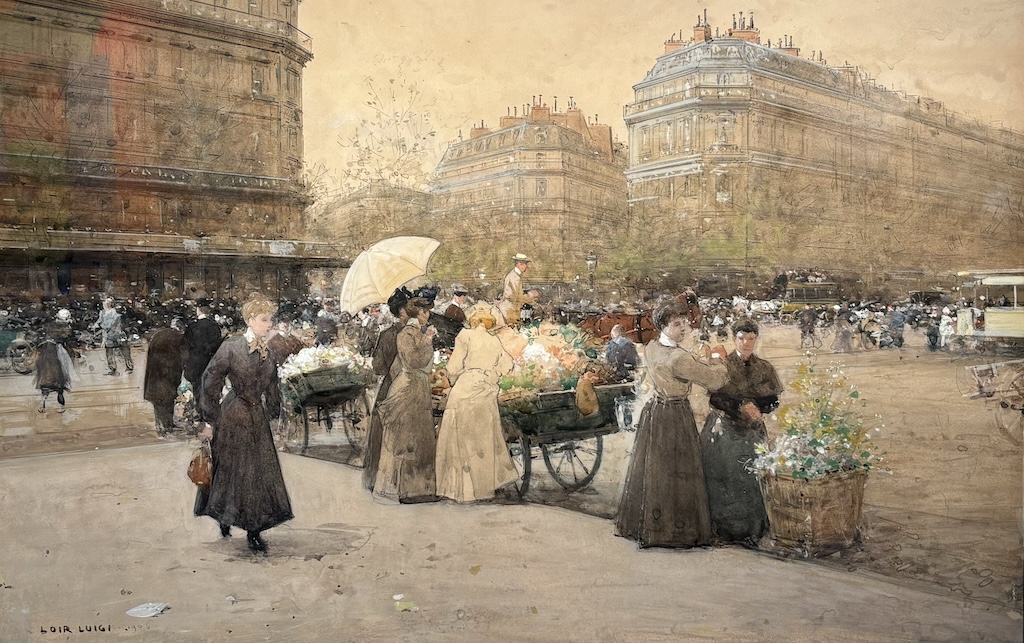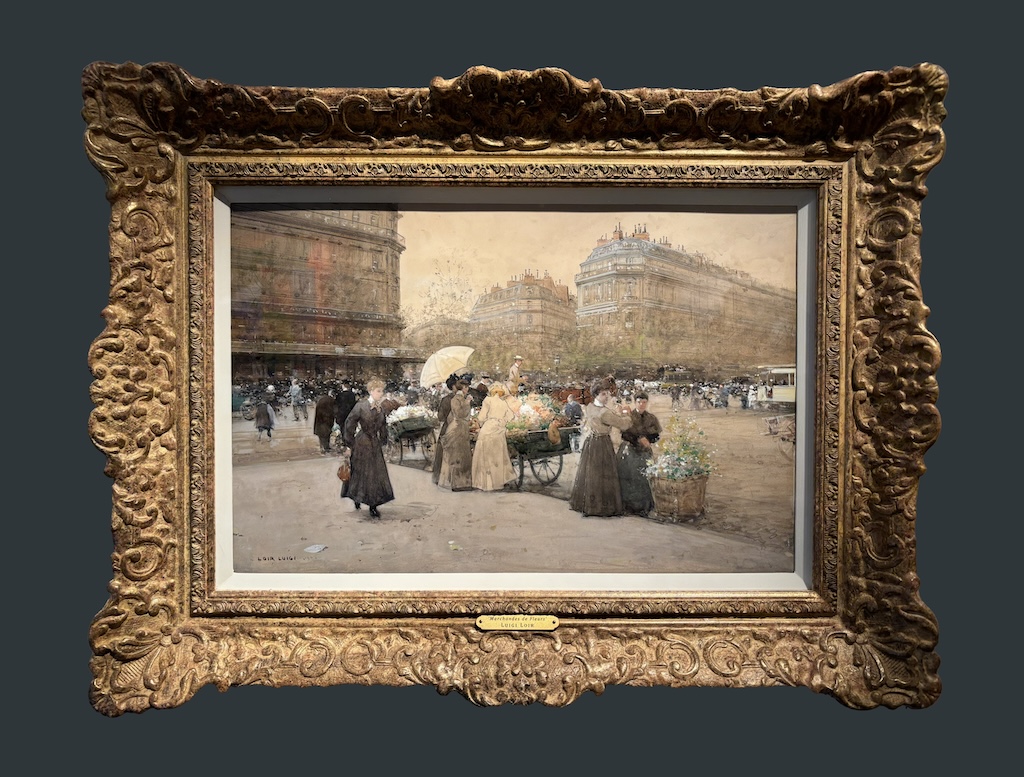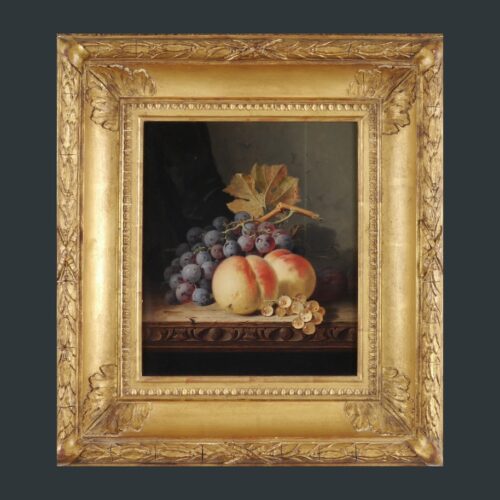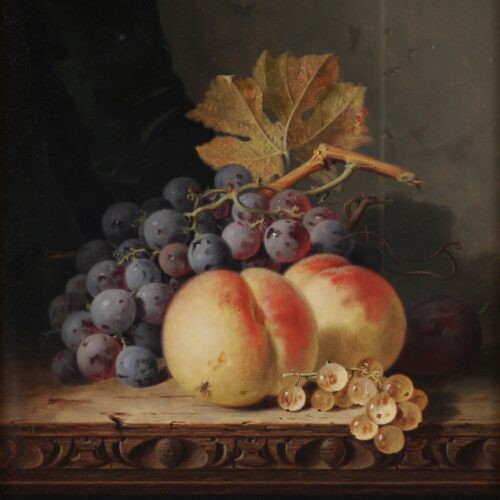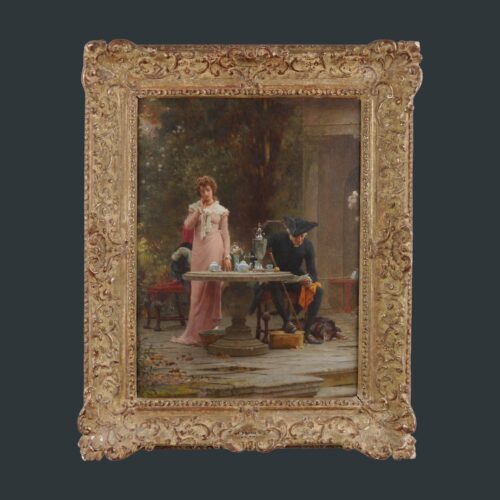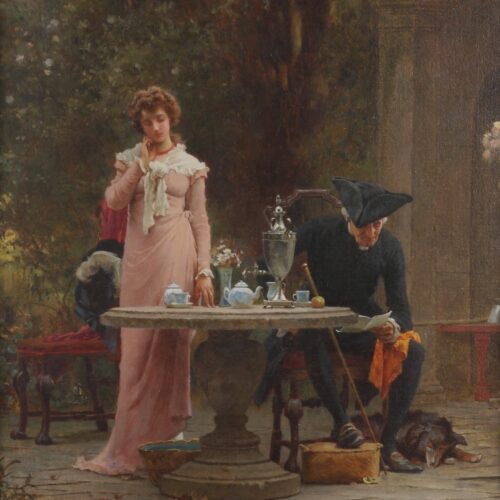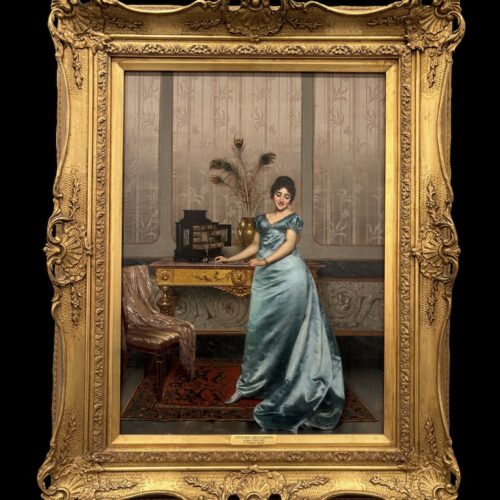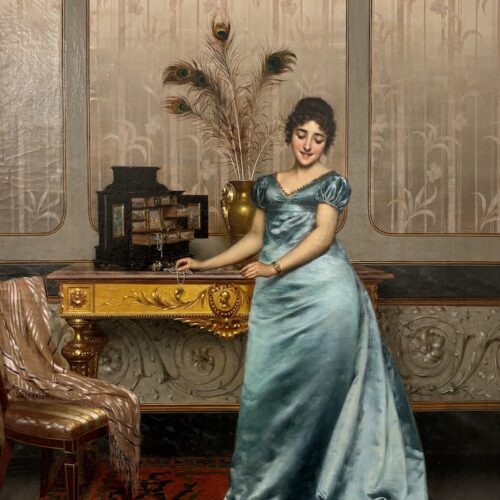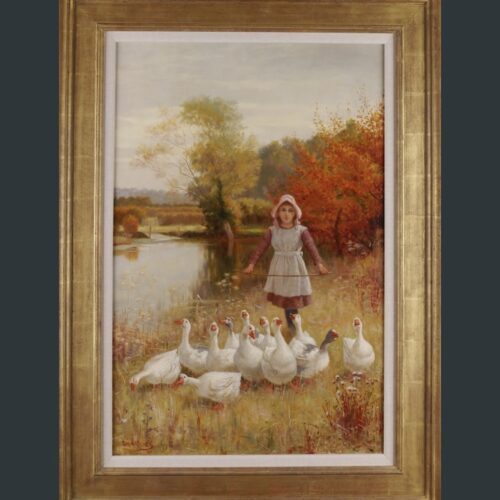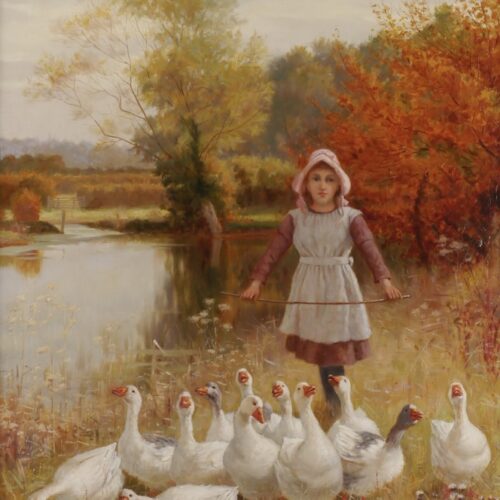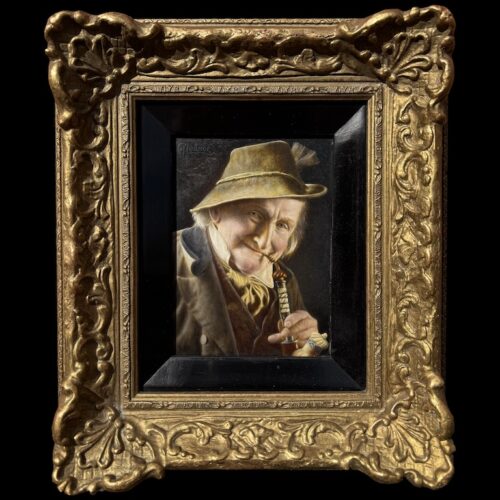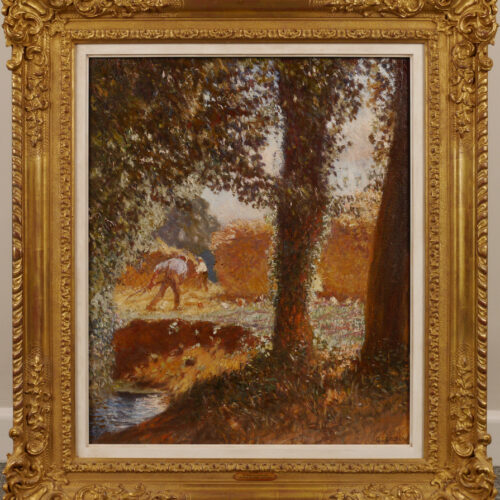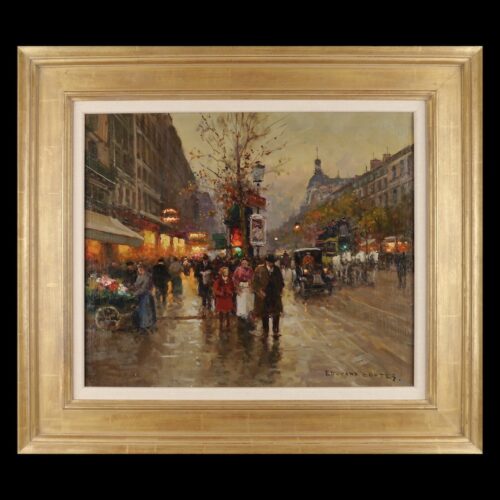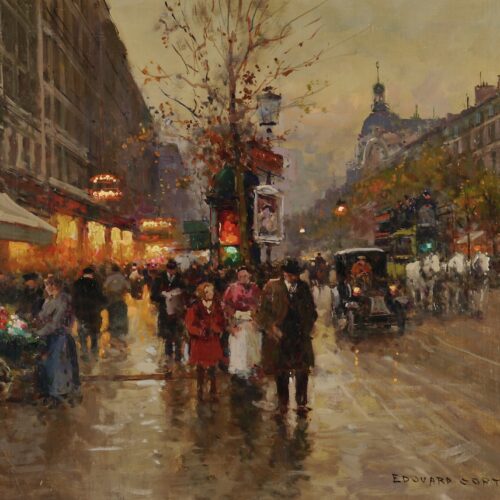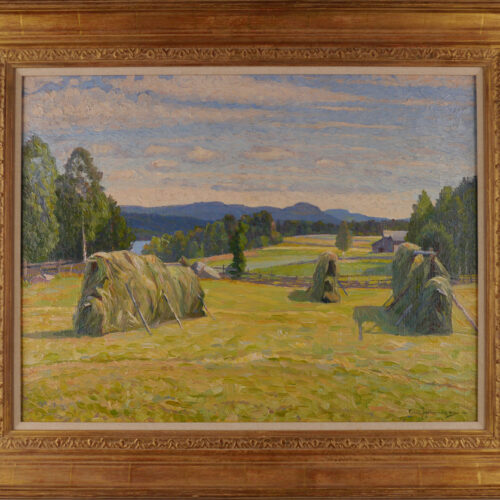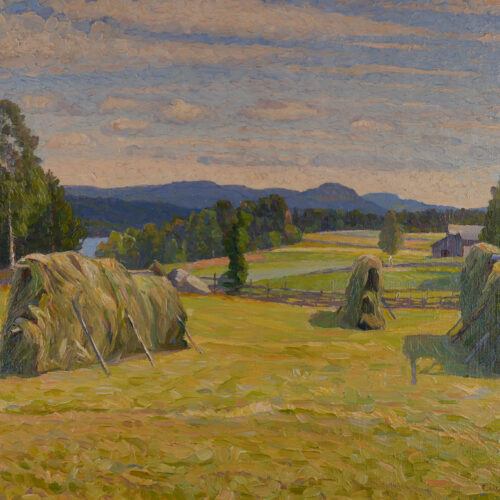Luigi Loir enrolled at the school of fine arts in Parma in 1853. Ten years later he went to Paris and worked in the studio of the painter and set designer Pastelot. During the early part of his career, he produced paintings but continued to execute theatre sets, notably for Devil’s Castles (Châteaux du Diable) in 1866. After the 1870 campaign, during which he distinguished himself in the battle of Bourget, Loir devoted himself almost exclusively to painting scenes of Paris. The genre for which he is mainly renowned.
Loir was the Paris painter par excellence, capturing and expressing all aspects of the life of the city at all hours of the day and night. He may be criticised for excessive attention to the process, but his invaluable powers of observation are undeniable. Apart from those of his canvases which are in museum collections, his best-known works include: Preparations for the Fun Fair (acquired for the Salle d’Honneur of the Conseil Municipal in Paris); Scrap Iron Market (bought by the City of Paris); Rue de la Pitié Seen from the Val-de-Grâce (in the Salon des Sciences in the Hôtel de Ville in Paris); and At the Fête du Trône (a watercolour which was acquired by the Empress of Russia). Loir was also a talented lithographer.

